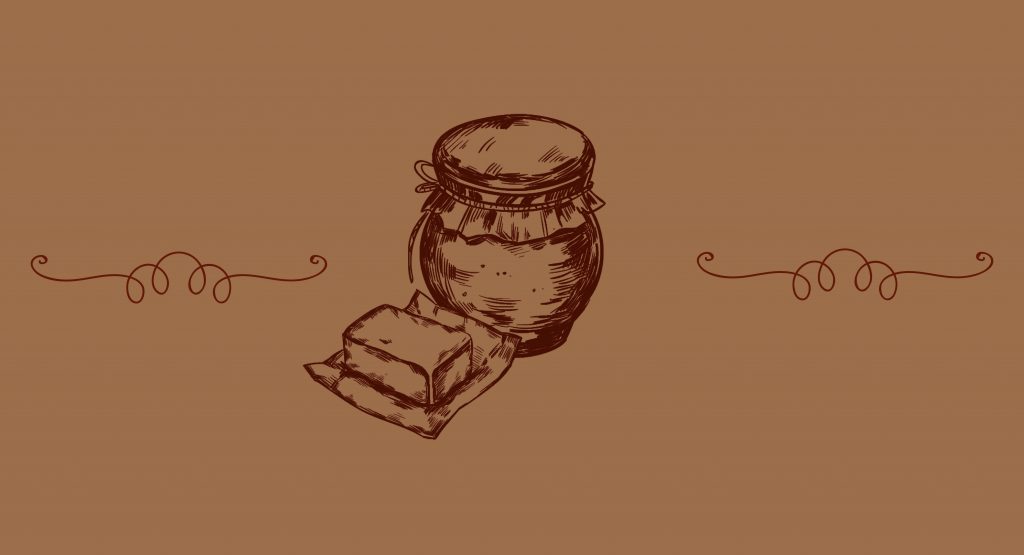No products in the cart.
Recipe for Ghee is a Recipe for Love
A wonderful way to slow down your day and warm any frayed nerve edges is by spending some time in your kitchen making a batch of Ghee. It is an ancient sacred healing ritual for bringing “Sneha”, the lustrous lubricating quality of oil into your life, and equally love, as the word is used for both of these terms in Sanskrit.
Clear the kitchen of anything other than delight. Freshen yourself beforehand, then pause for a moment to tune in with the Adi mantra. Guru Nanak dev ji’s Japji or another mantra or shabad can accompany you from there on, on this clarifying journey.
Source four or five blocks of organic butter with no added salt. They are the main ingredient for this recipe. You will also need a pot, unbleached cheesecloth, a bowl and some jars. It takes around a half an hour to complete this process.
Place the pot on the stove in front of you and decant the butter into it. The cheesecloth is stretched over a large bowl that can handle temperature to your side on the counter top. The jars are freshly scrubbed and dry.
Turn the heat up to medium on the stove. If the butter starts melting rapidly and bubbling and as the liquid rises quickly, turn it down a bit. Alternatively, if the temperature is too low, there will not be enough warmth for the process to complete. Somewhere in the middle, the blocks melt at a steady pace into a yellowy broth, big sloppy bubbles emerge. At this stage the butter still has water content in it. Keep refocusing on your breath, “Ek Ong Kar Sat Naam…” and continue.
Some suggest to stir and skim off the froth that then develops. I find it settles to the bottom and turns light brown (not burnt) without further fiddling. If you dip in a spoon then, the liquid is a cloudy pale yellow. From time to time see if it is still cloudy or is clearing. After approximately 20-30 minutes, the sound of the bubbles becomes “tinny”, a bit like rain on a metal roof. It is a distinct change. This is the transition from butter to oil. The temperature of the liquid can rise rapidly now and overboil or burn. The mixture would turn brown if so, so turn the heat down or off. If the Ghee is ready, it becomes a clear golden yellow colour.
Take off the stove and let it cool long enough for you to lift safely and then pour into the jars. It will then set to a solid as it cools. Wait till then to put the lids on. There is no need to store them in the fridge, but no harm done either to do so, especially in hot weather. Label and date them if you wish. There will be some brownish residue left in the pot, which if not burnt, can be used for cooking or baking.
Ghee is known for its healing properties inside as well as smoothed on your skin. It helps to clear toxins away as it moves through the stomach and intestines and is also used in massage and for wound healing. It is often combined in Ayurveda Medicine with other herbs to enable their ingestion and absorption. Limit the use if you have an excess of oil or congestion already in your body and speak to your doctor, if you have any particular health conditions, such as high cholesterol, a heart condition or diabetes.

Explore further Ayurvedic and yogic diet recipes and lifetimes of conscious cooking wisdoms of the Kundalini Yoga universe with the books:
From Vegetables, With Love
and
Both with 20% OFF!
(Discount valid until October 31st, 2022)

If you are touched by any of the words I share, they are from my understanding of the Teachings through sitting in class with my Teacher most weeks each month each year. I am a Level 2 qualified Kundalini Yoga Teacher presently sharing in Level 3 and student of Sacred Numerology through the Karam Kriya School, a student of Shiv Charan Singh. I hold a 550hour Ayurveda Lifestyle and Nutrition Practitioner qualification with the European Institute of Vedic Studies. I set up a yoga and healing arts programme across various acute NHS mental hospitals in London in 2008 and have worked with galleries such as Tate Modern, Tate Britain and the National Portrait Gallery exploring the art of yoga and the yoga of art because I love to share what I love for myself, to write, draw, paint, sculpt, sew and cook, a creative, juicy life worth living. I was born in Cape Town, South Africa where I live as part of the international Ashram Guru Ram Das family.
More Related Blogs